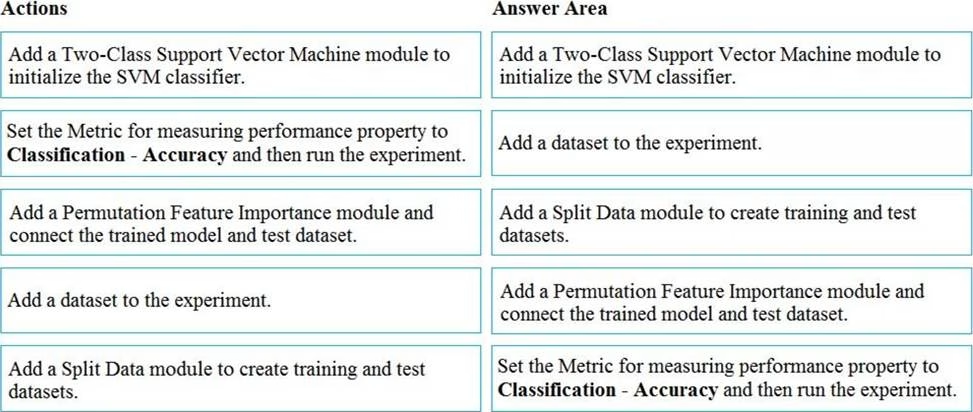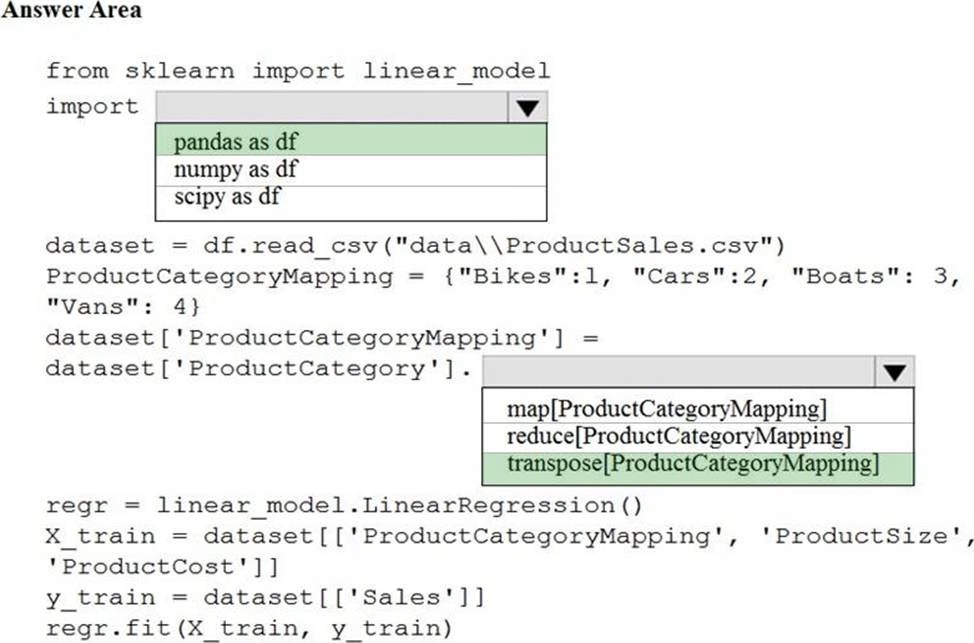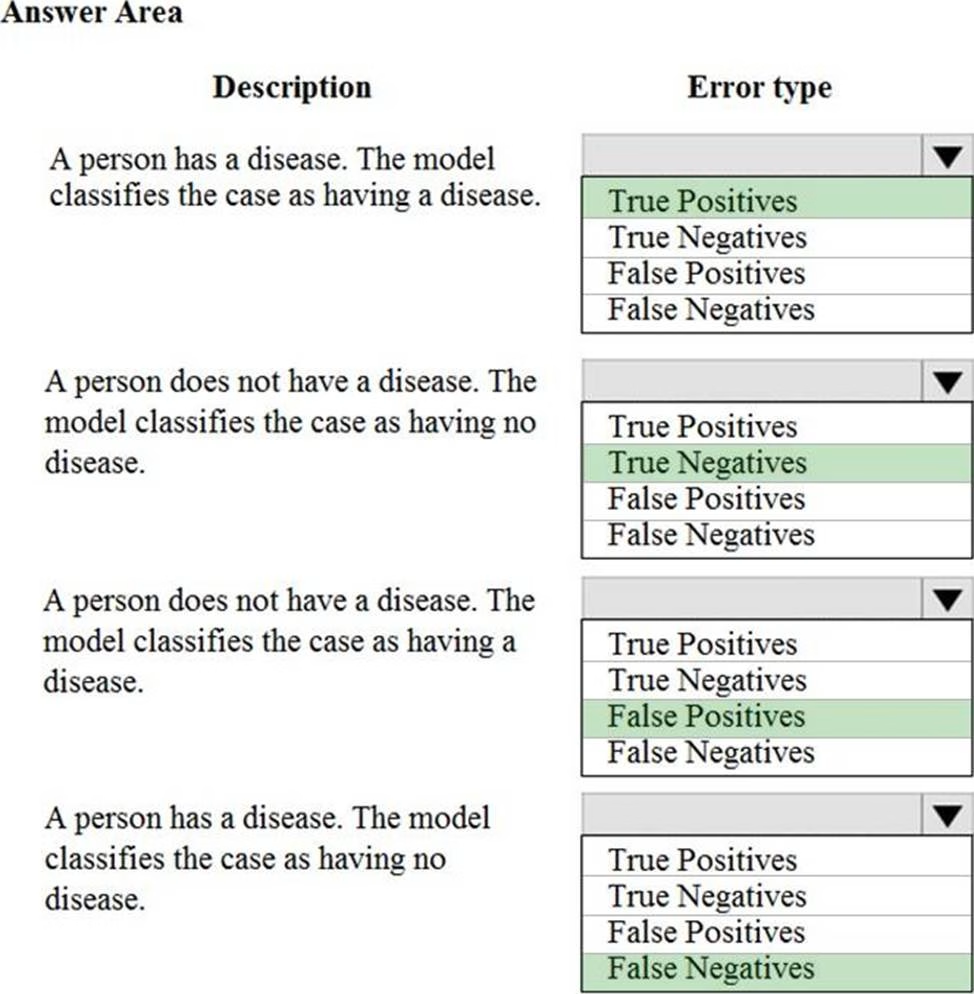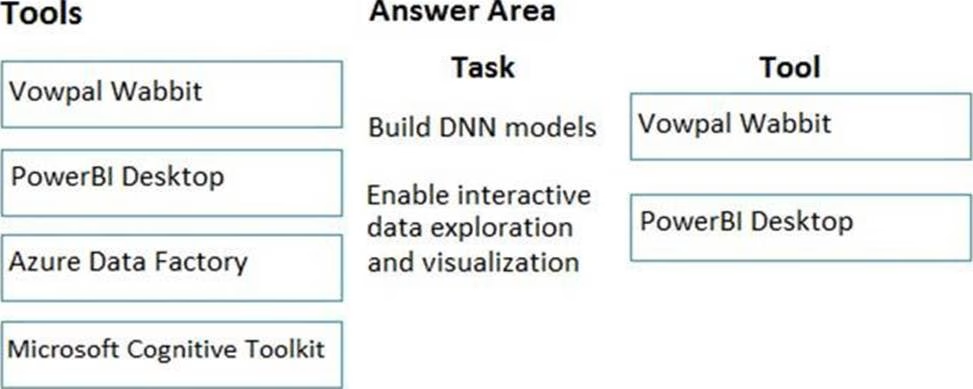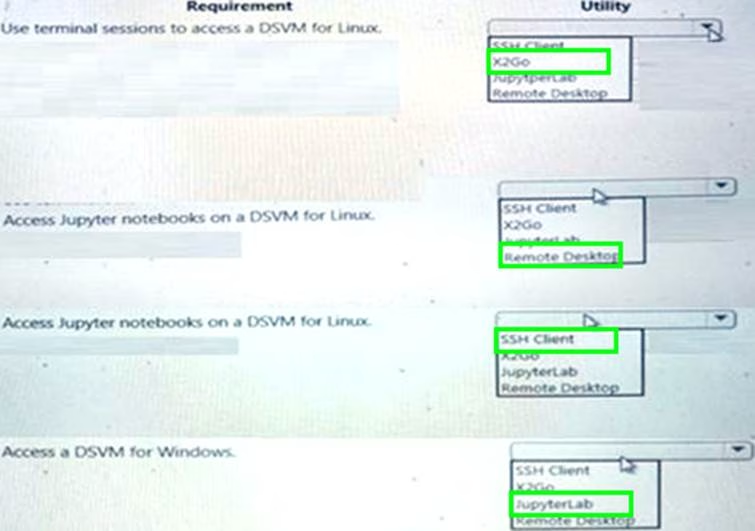Microsoft DP-100 Designing and Implementing a Data Science Solution on Azure Online Training
Microsoft DP-100 Online Training
The questions for DP-100 were last updated at Dec 14,2025.
- Exam Code: DP-100
- Exam Name: Designing and Implementing a Data Science Solution on Azure
- Certification Provider: Microsoft
- Latest update: Dec 14,2025
DRAG DROP
You have a dataset that contains over 150 features. You use the dataset to train a Support Vector Machine (SVM) binary classifier.
You need to use the Permutation Feature Importance module in Azure Machine Learning Studio to compute a set of feature importance scores for the dataset.
In which order should you perform the actions? To answer, move all actions from the list of actions to the answer area and arrange them in the correct order.
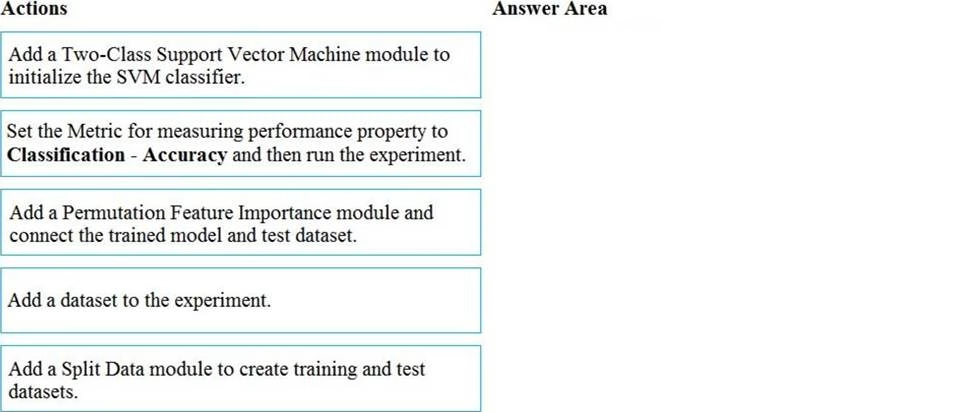
HOTSPOT
You are creating a machine learning model in Python. The provided dataset contains several numerical columns and one text column. The text column represents a product’s category.
The product category will always be one of the following:
✑ Bikes
✑ Cars
✑ Vans
✑ Boats
You are building a regression model using the scikit-learn Python package.
You need to transform the text data to be compatible with the scikit-learn Python package.
How should you complete the code segment? To answer, select the appropriate options in the answer area. NOTE: Each correct selection is worth one point.
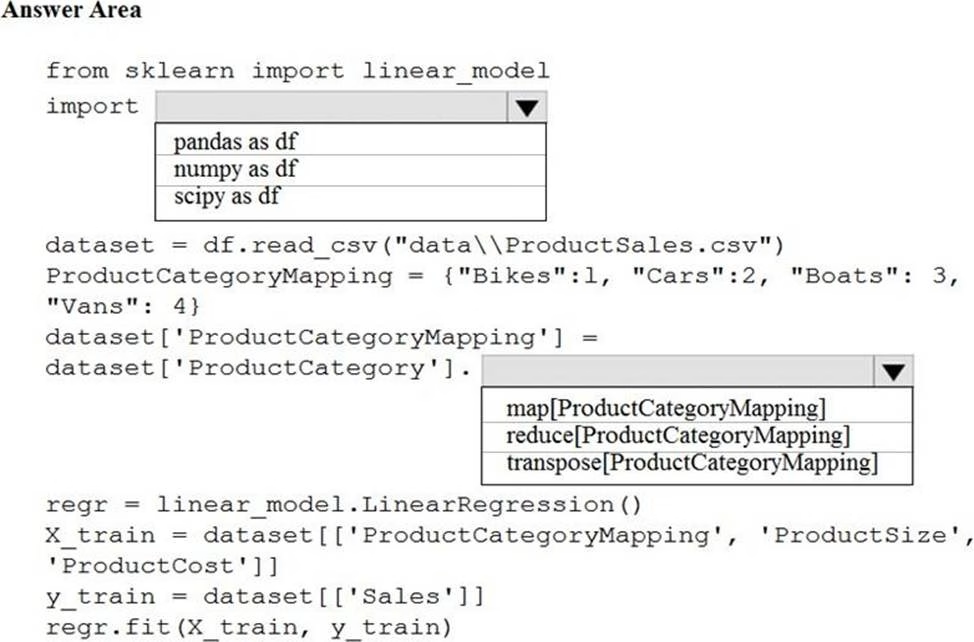
HOTSPOT
You create a binary classification model to predict whether a person has a disease.
You need to detect possible classification errors.
Which error type should you choose for each description? To answer, select the appropriate options in the answer area. NOTE: Each correct selection is worth one point.
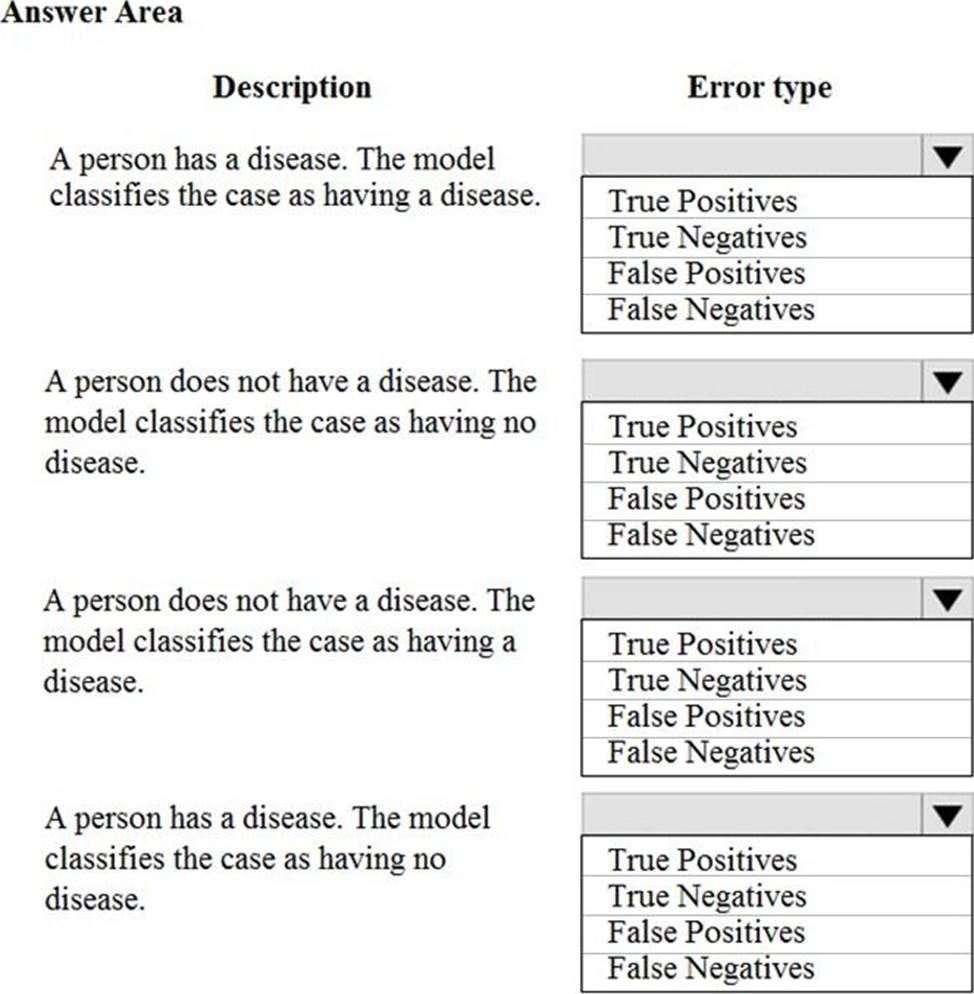
You plan to use a Data Science Virtual Machine (DSVM) with the open source deep learning frameworks Caffe2 and Theano. You need to select a pre configured DSVM to support the framework.
What should you create?
- A . Data Science Virtual Machine for Linux (CentOS)
- B . Data Science Virtual Machine for Windows 2012
- C . Data Science Virtual Machine for Windows 2016
- D . Geo AI Data Science Virtual Machine with ArcGIS
- E . Data Science Virtual Machine for Linux (Ubuntu)
You are a data scientist creating a linear regression model.
You need to determine how closely the data fits the regression line.
Which metric should you review?
- A . Coefficient of determination
- B . Recall
- C . Precision
- D . Mean absolute error
- E . Root Mean Square Error
You plan to use a Deep Learning Virtual Machine (DLVM) to train deep learning models using Compute Unified Device Architecture (CUDA) computations.
You need to configure the DLVM to support CUDA.
What should you implement?
- A . Intel Software Guard Extensions (Intel SGX) technology
- B . Solid State Drives (SSD)
- C . Graphic Processing Unit (GPU)
- D . Computer Processing Unit (CPU) speed increase by using overcloking
- E . High Random Access Memory (RAM) configuration
DRAG DROP
You configure a Deep Learning Virtual Machine for Windows.
You need to recommend tools and frameworks to perform the following:
✑ Build deep neural network (DNN) models
✑ Perform interactive data exploration and visualization
Which tools and frameworks should you recommend? To answer, drag the appropriate tools to the correct tasks. Each tool may be used once, more than once, or not at all. You may need to drag the split bar between panes or scroll to view content. NOTE: Each correct selection is worth one point.
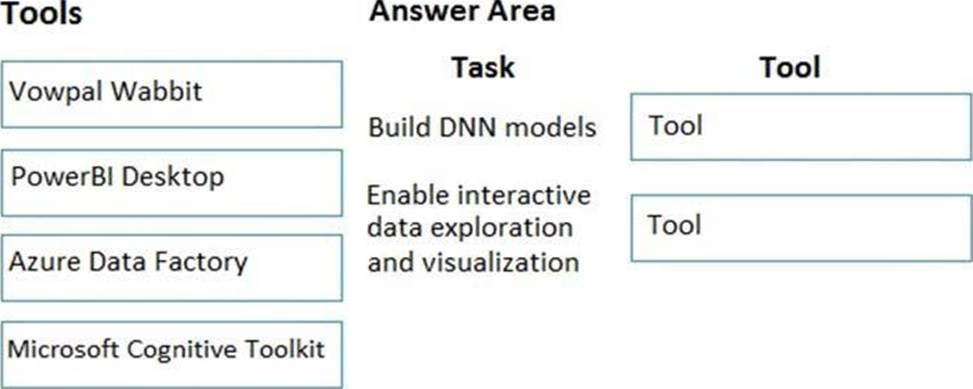
HOTSPOT
You use Data Science Virtual Machines (DSVMs) for Windows and Linux in Azure.
You need to access the DSVMs.
Which utilities should you use? To answer, select the appropriate options in the answer area. NOTE: Each correct selection is worth one point.
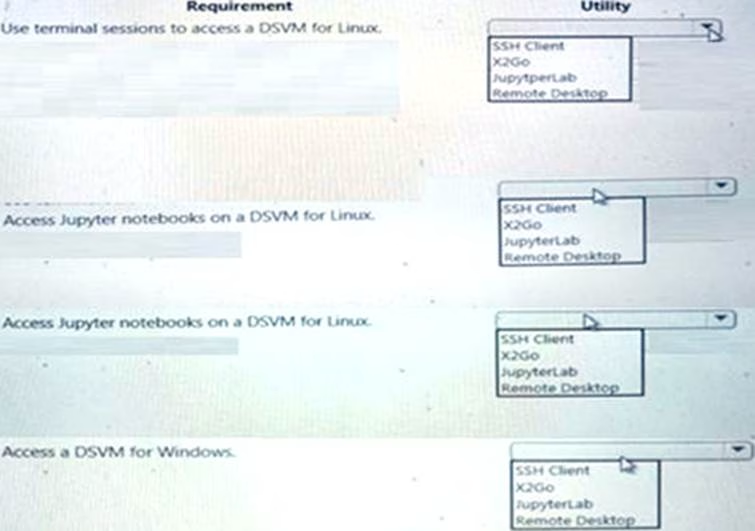
You need to select a pre built development environment for a series of data science experiments. You must use the R language for the experiments.
Which three environments can you use? Each correct answer presents a complete solution. NOTE:
Each correct selection is worth one point.
- A . MI.NET Library on a local environment
- B . Azure Machine Learning Studio
- C . Data Science Virtual Machine (OSVM)
- D . Azure Data bricks
- E . Azure Cognitive Services
You plan to create a speech recognition deep learning model.
The model must support the latest version of Python.
You need to recommend a deep learning framework for speech recognition to include in the Data Science Virtual Machine (DSVM).
What should you recommend?
- A . Apache Drill
- B . Tensorflow
- C . Rattle
- D . Weka
Latest DP-100 Dumps Valid Version with 227 Q&As
Latest And Valid Q&A | Instant Download | Once Fail, Full Refund

